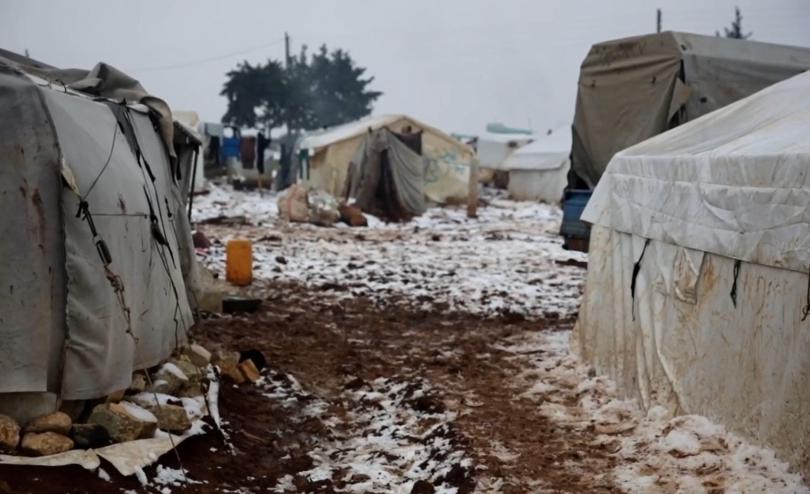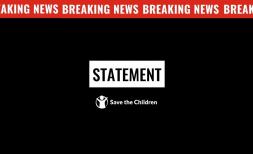Save the Children: Millions of refugee and displaced children in overcrowded camps as coronavirus spreads globally

Archive footage of refugee and displacement camps is available here
Vulnerable children and their families living in informal settlements such as refugee and displacement camps cannot be forgotten as the world tightens restrictions in a battle to contain the coronavirus outbreak, Save the Children is warning.
Around the world there are more than 12 million child refugees and globally some 70 million people have been forced to flee from their homes, many of whom are currently living in overcrowded conditions with limited or no access to healthcare. Refugees and forcibly displaced children are already vulnerable to infectious diseases in a number of ways, including through having reduced access to healthcare, water and sanitation systems and having potentially weakened immune systems.
Some response measures currently being adopted by governments, such as self-isolation, are extremely challenging within overcrowded displacement camps. In Idlib, Syria, where conflict has forced nearly a million people to flee into inhumane living conditions in camps stretched far beyond capacity, self-isolation would be practically impossible during an outbreak of coronavirus with potentially devastating consequences for families living through the tenth year of the Syrian conflict.
In Cox’s Bazar in Bangladesh, home to the largest refugee settlement in the world, there is currently no system in place to screen or test for Covid-19 and there are no intensive care units for the nearly one million refugees, half of whom are children. With freedom of movement severely restricted and cramped conditions also compromising people’s ability to self-isolate, the virus could prove catastrophic.
Dr Shamim Jahan, Deputy Country Director for Save the Children in Bangladesh, said:
“Even though at present there are no confirmed cases of Covid-19 in Cox’s Bazar, we’ve kept an isolation unit with 15 beds in our primary healthcare centre in one of the camps specifically for isolation as needed. If Covid-19 should spread widely, we’d still be able to keep running our primary healthcare centre alongside the isolation unit which is crucial to saving lives but there is a risk we could become overwhelmed. The centre normally treats children for pneumonia and offers pregnant women with vital maternal healthcare services.”
In Sub-Saharan Africa, which hosts more than a quarter of the world’s refugee population, cases are rapidly being confirmed across the majority of countries. With just 0.2 doctors per 1000 people, it’s the region with the fewest number of medical professionals per capita in the world, putting both refugees and host communities at risk as the virus spreads. By contrast, East Asia and the Pacific, where the vast majority of confirmed cases of Covid-19 have occurred, has 1.6 doctors per 1000 people. Save the Children is calling on donors to strengthen support to health systems in East and Southern Africa to ensure that vital health services are not diverted from communities who are already battling deadly diseases and health issues such as malnutrition.
Save the Children runs major sanitation and hygiene programs across the globe and is working with health teams on the ground to roll out Covid-19 prevention messages like handwashing and self-isolation. These actions will ultimately support children's ability to prevent infection and resilience to overcome it if they become ill, but more support is needed to bring these actions to scale.
Dr Zaeem Haq, Save the Children’s Global Medical Director, said:
“Covid-19 is a global health crisis which requires a coordinated global response. It is in all of our interests to ensure we are doing everything to prevent further spread of the virus and this is especially significant in refugee and displacement camps where isolation and testing pose significant challenges. Children already bear the burden of many of the world’s infectious diseases including pneumonia, malaria and cholera and families already struggle to get adequate health care.”
Save the Children is calling on international donors and national governments to scale up investment in health systems to allow countries to respond to the outbreak without compromising other health services, and to roll out communications campaigns within refugee populations to stop new infections from occurring. Our teams across the world are preparing for potential outbreaks in countries with weakened health systems, fragile contexts or a limited capacity to respond due to other ongoing crises, such as conflict or natural disasters.
NOTES TO EDITORS:
- Save the Children’s emergency health teams have played a key role in responding to major epidemics around the world, including a large-scale immunization campaign in response to the Yellow Fever outbreak in DRC as well as cholera outbreaks in Yemen, South Sudan, Somalia, Mozambique and DRC. In response to the 2014 and 2018 West Africa Ebola virus outbreak, Save the Children was at the heart of the crisis from the start.
- Save the Children’s water, sanitation and hygiene programs across the globe aim to reduce diarrhoea and other diseases in children under the age of five and reduce chronic malnutrition in children under the age of two. Save the Children collaborates with governments, civil society and communities to develop market-oriented approaches to improve water quality and promote the adoption of improved hygiene practices, particularly amongst children.




